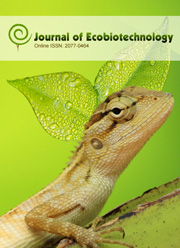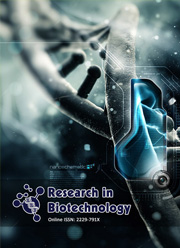Bioadsorption of Chromium Resistant Enterococcus casseliflavus Isolated from Tannery Effluents
Abstract
Abstract
Bioadsorption, bioaccumulation and enzymatic reduction are the processes by which the microorganisms interact with the toxic metals, enabling their removal or recovery. In the present study, a bacterial strain was isolated from tannery effluent and identified as Enterococcus casseliflavus. It showed a high level resistance of 800 µg/ml chromium. The minimal inhibitory concentration of chromium was found to be 512 µg/ml of potassium dichromate in Nutrient broth medium. The chromium adsorption was more significant by the live cells than killed cells at different time intervals. It was observed that, the inoculation of Enterococcus casseliflavus reduced the BOD and COD values of tannery effluent. The maximum adsorption of chromium was at a temperature of 35ºC to 45ºC and at a pH of 7.0 to 7.5.Downloads
Download data is not yet available.
Published
22-11-2010
How to Cite
K. Mythili, P. S. D. S. , D. R. and. “Bioadsorption of Chromium Resistant Enterococcus Casseliflavus Isolated from Tannery Effluents”. Journal of Ecobiotechnology, vol. 2, no. 7, Nov. 2010, https://updatepublishing.com/journal/index.php/jebt/article/view/80.
Issue
Section
REGULAR ISSUE ARTICLES



 .
.